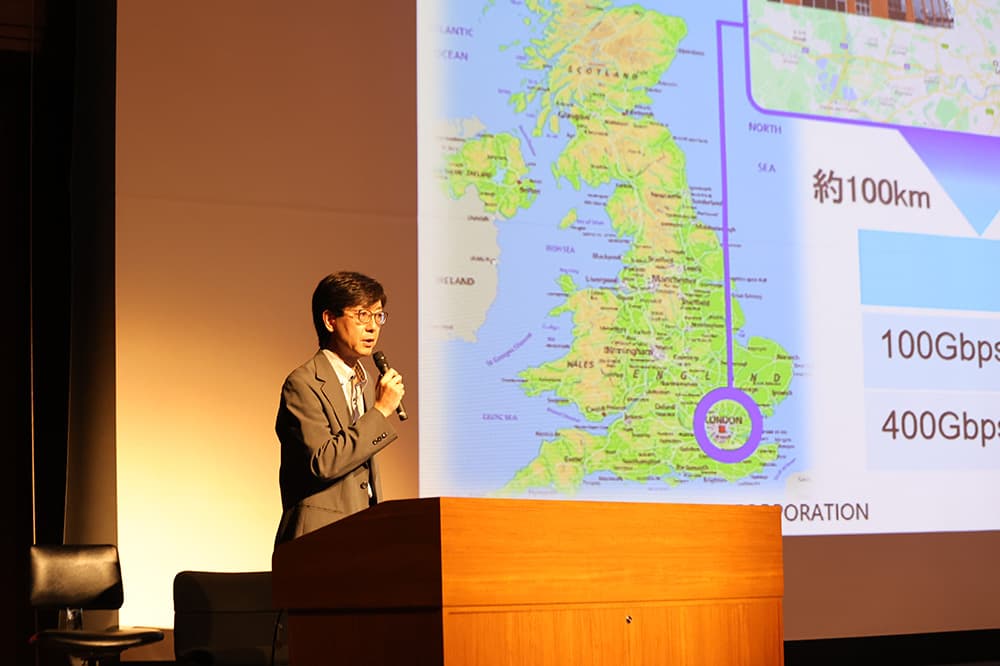
On June 20, 2025, the Kyoto Information Industry Association (Chairman: Wataru Hasegawa, President of KCG Group), which has its secretariat at Kyoto Computer Gakuin (KCG), held a seminar for prefectural residents in the 6th floor hall of KCG Kyoto Ekimae Campus, jointly sponsored by KCG, Kyoto Computer Guraduate Institute of Information Science (KCGI) and Kyoto Prefecture Small and Medium Enterprise Technology Center.Mr. Katsuyuki Hasebe, General Manager of IOWN Promotion Office, Research Planning Division, Nippon Telegraph and Telephone Corporation, gave a lecture titled "IOWN: Realization of a Sustainable Society through Telecommunications," which was attended by members of the association and students from KCG and KCGI.
In order to realize a wellbeing world in which each individual can live a fulfilling life, further development of ICT is required, but the increasing amount of data in circulation has led to the introduction of large numbers of computers, which consume enormous amounts of electricity.Mr. Hasebe explained the concept of "IOWN," a next-generation information and telecommunications infrastructure that aims to solve this problem, which is expected to increase in the future and faces a crisis of sustainability, focusing on past efforts.
In his presentation, he explained the features of IOWN, citing examples such as orchestral performances with ultra-low latency in Tokyo and Osaka, and robot surgeries performed by remote control.In addition to the company's pavilion at the ongoing Osaka-Kansai Expo, IOWN technology is being used in various events such as live viewing of super kabuki and sports games, project mapping, and remote customer service, leading to the realization of a future society, which the participants listened to with great interest.
IOWN (ION: Innovative Optical & Wireless Network) concept:
NTT announced in May 2019 an ICT infrastructure infrastructure concept that shifts from conventional electronic technology (electronics) to optical technology (photonics) to realize networks with "lower latency," "lower power consumption," "higher capacity and higher quality.The objective is to optimize the individual and the whole based on all kinds of information, and to create a rich society that can accept diversity.Research and development is underway with the aim of finalizing specifications in 2024 and realizing the system in 2030.